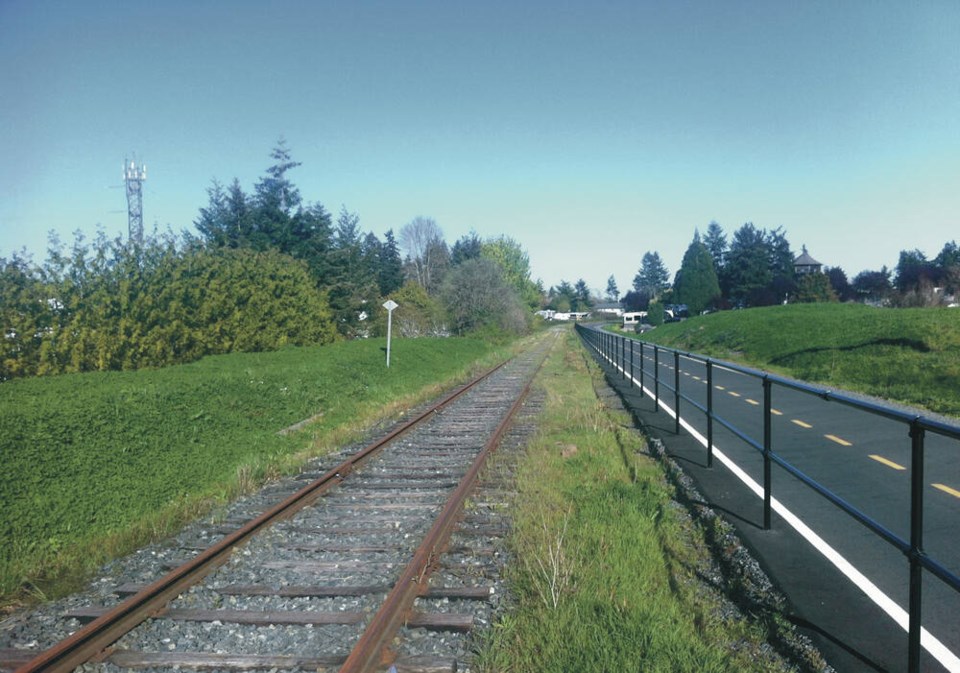There are better ways to improve public transportation on Vancouver Island than wasting money to prop up a failed Victorian railway as the Capital Regional District board is suggesting. I hope the intention of the recent CRD motion about the corridor was about reconciliation, not about reinstating a railway that no longer makes sense.
The Island Corridor Foundation’s recent business case for rail cherry-picks information that underestimates the real costs and exaggerates the benefits of their proposal.
A half-billion dollars would only provide two daily trains from Duncan to Victoria, which is not nearly enough frequency to serve most travellers. More frequent bus service would do the job better and at less cost to taxpayers.
But worse than this weak business case for rail is the CRD elected officials’ response — asking senior governments to waste taxpayer money to pay for it.
The foundation’s analysis conjures up passenger numbers based on unsupported claims of mode-share capture and fails to recognize the importance of transit frequency in capturing ridership.
It also ignores the time and cost of transfers from Vic West to most CRD destinations. In contrast, bus routes travelling on well-placed corridors directly to downtown, the University of Victoria and Oak Bay would be considerably cheaper.
According to transportation planner Todd Litman, in his report Rethinking Malahat Solutions, frequent and available bus service on that highway could attract 10 to 30 per cent of trips, much more than limited train service would divert and requiring far fewer public dollars.
Many elected officials I’ve spoken to see through the foundation’s questionable business case. Most also agree that this continuous corridor is a valuable asset which should be protected.
Support of rail for this purpose is misguided. Because of historical wrongs in the creation of this corridor, we must work with First Nations whose reserve land this corridor transects. There are ways of working together in the public interest without funding a train that no longer makes sense.
A widespread doomsday scenario by rail advocates tells us that the entire corridor will be lost if the rails are lifted. On part of the E&N rail system between Duncan and Lake Cowichan, however, the rails have already been lifted and the right-of-way converted to a trail. The same could be done for most of the rest of the system.
The short sections of the right-of-way that traverse three First Nations reserves will likely revert to them. This will not affect a continuous trail on the corridor because the trail can, if necessary, be diverted around the reserves like the E&N Trail in the CRD.
First Nations could also choose to be partners in the trail as First Nations have done on the Okanagan Rail Trail. This flexibility would give First Nations the choice of buying into an active transportation corridor or not, and would help right the wrong of inappropriate seizure of their land for the railway.
The Vancouver Island Corridor is a unique and valuable asset that can be preserved and returned to public use as an active transportation corridor and an economic generator.
A continuous active transportation trail would give the many communities on the corridor local, safe transportation options and create a world-class tourist attraction. Based on tourism studies on such trails in other areas, the benefits to local communities are significant.
The GAP Trail in Pennsylvania is constructed on the rail-bed of a disused coal-carrying railway, similar in length and settlement pattern to the Island Corridor. It attracts more than a million visitors a year, spending an average of $200 a night.
A recent study also found that more than 30 per cent of the business done along the trail was generated by the trail. An Island Corridor Trail would also deliver on the province’s policy of providing local transportation alternatives to driving and, although there is no likelihood of funding for rail, there already is funding for active transportation.
The federal Department of Infrastructure has grants of up to $50 million for a single active transportation project and up to $50,000 for feasibility studies.
An active transportation corridor not only conforms more closely to current government transportation, environmental and tourism policies, it could also, by allowing First Nations control of the corridor on their reserves, contribute to reconciliation.
It can also be accomplished for a fraction of the cost of rail.
>>> To comment on this article, write a letter to the editor: [email protected]



